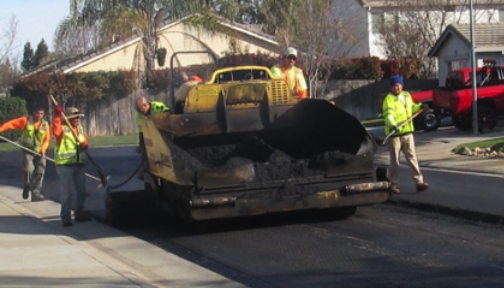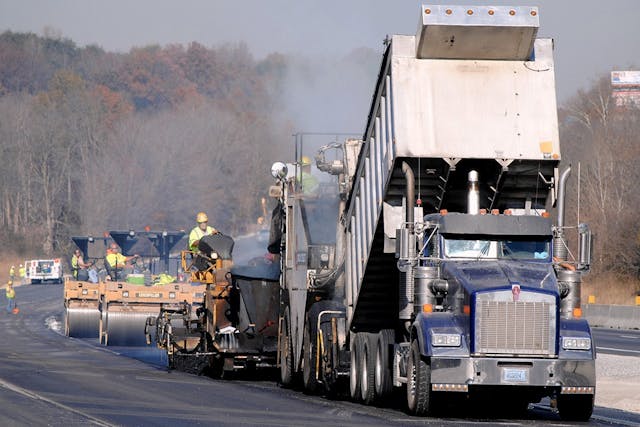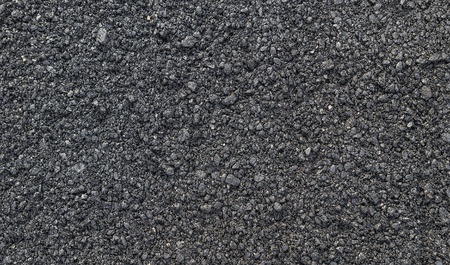Enhance Home Worth and Performance with Hot Mix Asphalt Paving Providers
Enhance Home Worth and Performance with Hot Mix Asphalt Paving Providers
Blog Article
Opening the Keys of Warm Mix Asphalt Technology
Exploring the depths of hot mix asphalt innovation discovers a world where careful procedures and exact formulas assemble to form our roads and facilities. The combination of fillers, accumulations, and binders isn't just a building and construction job however a tactical orchestration of sturdiness and effectiveness. As we peer into the elaborate dance of parts, a tapestry of strength and sustainability unravels. What lies beneath this surface area of asphaltic proficiency, and what tricks wait to be unveiled in the world of leading developments?
Relevance of Warm Mix Asphalt
Warm Mix Asphalt plays a crucial duty in contemporary infrastructure advancement due to its resilience and cost-effectiveness. As one of the most commonly utilized leading material for roads, freeways, and car park great deals, Warm Mix Asphalt offers a variety of advantages that add to its relevance in building and construction jobs. One vital advantage is its capability to endure rush hour loads and severe weather problems, providing a resilient and reliable surface for transport networks. Additionally, Hot Mix Asphalt is cost-efficient in both initial building and lasting upkeep, making it a preferred option for lots of framework projects.
The toughness of Warm Mix Asphalt originates from its make-up, that includes accumulations, binder, and filler products that are very carefully chosen and blended to fulfill details efficiency demands. This exact mix leads to a strong and flexible sidewalk that can withstand regular use without significant wear and tear. Warm Mix Asphalt is 100% recyclable, additional enhancing its sustainability and environmental advantages. Generally, the value of Hot Mix Asphalt in framework growth can not be downplayed, as it remains to be a foundation of modern-day construction techniques.
Components of Asphalt Mixes
The composition of asphalt mixes consists of very carefully selected accumulations, binder, and filler materials that are important for attaining specific performance demands. Accumulations are the key part of asphalt blends, providing stamina and security. The binder, commonly asphalt or asphalt concrete, holds the aggregates together and provides versatility and toughness to the mix.
The mix and percentage of these parts play a substantial role in determining the quality and performance of the asphalt mix. Engineers thoroughly develop the mix to satisfy particular demands, thinking about aspects like web traffic volume, climate conditions, and pavement life expectancy. Proper selection and balancing of aggregates, binder, and fillers are essential for creating durable, resilient asphalt sidewalks.
Combining and Manufacturing Methods

As soon as the accumulations are selected, the binder, frequently asphalt cement, is contributed to bind the materials together. The binder's quality and quantity considerably affect the mix's stamina, resistance, and versatility to environmental elements. Additionally, fillers like hydrated lime or Rose city cement may be included to improve particular features of the asphalt mix, such as its workability or wetness resistance.
Throughout production, the aggregates and binder are heated, commonly between 250-325 ° F(121-163 ° C ), to promote mixing and make sure appropriate finishing of the aggregates. The mixing procedure needs to be complete to accomplish a homogeneous combination that advertises the desired performance features of the asphalt. Different techniques, such as set blending or drum mixing, are used to accomplish consistent and high-quality asphalt mixes for building and construction jobs.
Factors Influencing Asphalt Performance
Factors affecting asphalt performance include a range of variables my response that influence the sturdiness, longevity, and general quality of asphalt sidewalks. One essential variable is the quality of products used in the asphalt mix. The kind and source of accumulations, the binder quality, and the ingredients all play a significant role in figuring out the performance of the asphalt pavement. The rank of aggregates is vital as it affects the mix's security, resistance, and workability to splitting and rutting.

Environmental problems also affect asphalt performance. Temperature level variations, dampness infiltration, and web traffic loads can all affect the structural stability of the sidewalk. Design factors to consider, such as pavement thickness and water drainage, are vital in ensuring the long-lasting efficiency of the asphalt pavement. By very carefully considering these aspects, contractors and engineers can optimize asphalt performance and improve the life span of sidewalks.
Lasting Practices in Asphalt Technology

WMA permits for the production and positioning of asphalt mixes at reduced temperatures compared to typical hot-mix asphalt, resulting in decreased power consumption and greenhouse gas exhausts. The use of porous asphalt blends can aid reduce stormwater drainage issues by permitting water to infiltrate with the sidewalk and into the ground, promoting all-natural water filtration and charge procedures.
Conclusion
To conclude, hot mix asphalt modern technology plays a crucial role in contemporary facilities advancement due to its sturdiness and cost-effectiveness. By meticulously stabilizing parts, employing appropriate mixing techniques, and thinking about different elements, engineers can produce top notch asphalt blends that hold up against rush hour lots and rough climate condition. Welcoming lasting methods, such as utilizing recycled products and warm-mix innovations, further enhances the ecological kindness of important source asphalt innovation.
Mixing and production techniques in warm mix asphalt innovation include the accurate combination and handling of accumulations, binder, and fillers to create a durable and high-performance asphalt mix.Variables affecting asphalt performance encompass an array of variables that affect the sturdiness, longevity, and total high quality of asphalt pavements. Lasting methods in asphalt technology include different efforts intended at minimizing the ecological impact of asphalt manufacturing and paving procedures. By integrating reclaimed asphalt sidewalk (RAP) and recycled asphalt roof shingles (RAS) right into new asphalt mixes, the market can considerably reduce the usage of raw materials and power, while also lowering landfill waste.
WMA permits for the production and positioning of asphalt mixes at reduced temperatures contrasted to traditional hot-mix asphalt, resulting in content minimized energy usage and greenhouse gas emissions.
Report this page